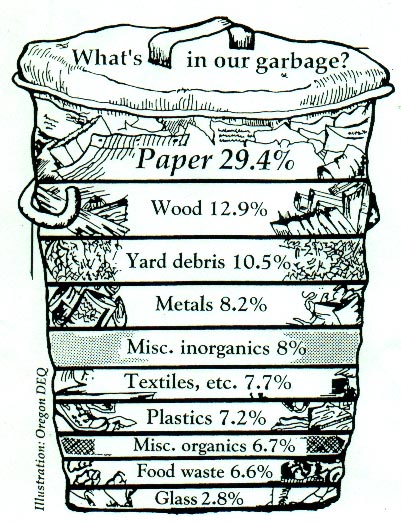How Landfills Work for Junk
Posted by Andy Greider on Mon, Oct 25, 2010 @ 08:33 AM
My son asked me the other day, "so, when you take junk to the landfills in Atlanta, what happens to it, Dad?" I began to answer his question, and found it raised other good questions - some of which I had to research to answer. So, since what I found seemed interesting to both of us, I thought I'd share it in the blog. (There's even a quiz, if you like that kind of thing, that follows.)
 We already discussed how much waste in generated in our blog earlier this week, but as a reminder, 4.6 POUNDS per PERSON per DAY! Wow! That's a lot - and most people don't consider the effects past when they toss the wrapper in the trash can or leave the rollie on the curb.
We already discussed how much waste in generated in our blog earlier this week, but as a reminder, 4.6 POUNDS per PERSON per DAY! Wow! That's a lot - and most people don't consider the effects past when they toss the wrapper in the trash can or leave the rollie on the curb.
So, what DOES happen to things when they get to the landfill - and is it always a landfill we send to?
Out of the 250 million plus tons of trash generated and taken to the landfill, almost 1/3 (32%) ends up being recycled or composted. Another 12-13% of it is burned. That still leaves 54% that is buried in a landfill. But that assumes it went to a landfill and not a dump.
What is the difference between a landfill and a dump?
When we say we dispose of our refuse in an approved landfill, we do so to keep it from going to a dump.
A dump is essentially exactly what it sounds like, a hole into which trash and junk is dumped, to be covered over. Often times, these dumps are overridden with vermin and don't smell very good. They do break down the materials more quickly, but still, they also contaminate the local water table and are used less and less.
We try, instead, to work with landfills - where they either use clay or plastic linings to isolate the trash from the eco-systems around it. While the materials do not break down, the main goal is to keep the water passing through the water table away from the actual trash. Be sure to check out the great information on how a landfill is built, maintained and more at How Stuff Works and don't forget to take the quiz.